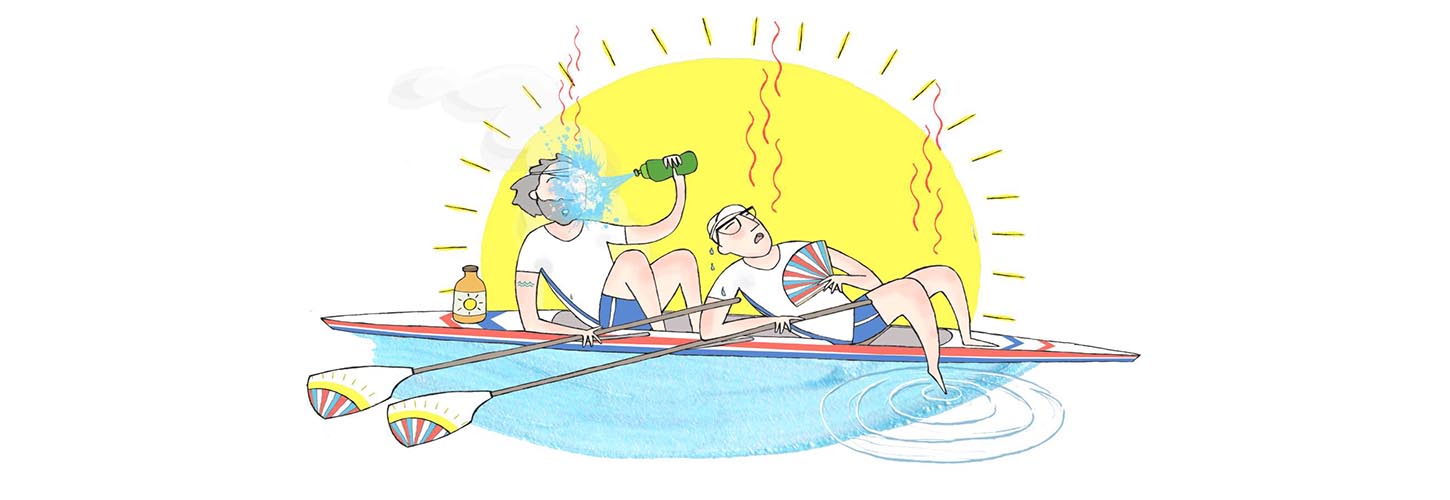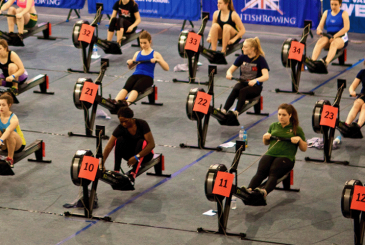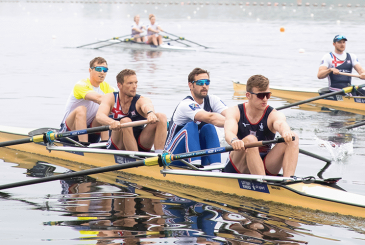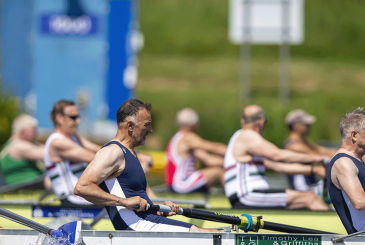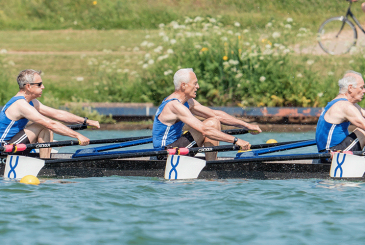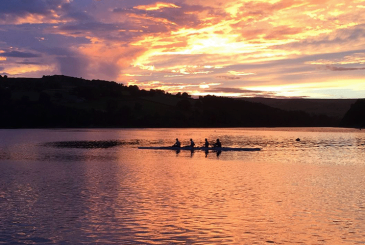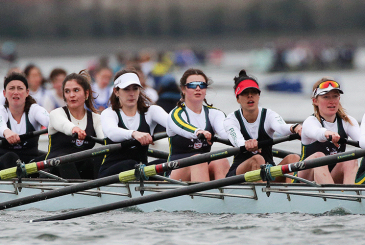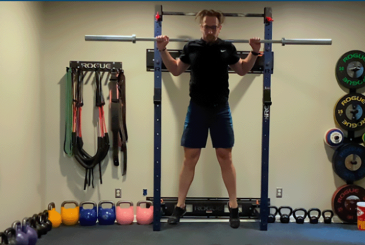What can you do to keep performing at your best when the thermometer goes up? Read on for advice from Sarah Moseley, British Rowing Sport Scientist (Physiology)
Exercising when it’s more than 25°C may have a significant impact on how you feel and perform. So what can you do to ensure that you are best prepared to thrive in the summer heat?
1 – Stay hydrated
Sweating plays an important role in cooling the body during exercise. Sweat rates can often exceed 1-2 litres/hour in the heat and, if fluids lost through sweating are not replaced sufficiently, then dehydration will occur. Even if you lose as little as 2% of your body weight in fluids, this can impair your ability to cool down and perform to your best.
What can you do?
Before exercise
Consume approximately 500ml of fluid every 2-3 hours before training or competition.
During exercise
Losses in body mass through sweating should be minimised by drinking little and often during an outing.
Be prepared and ensure that you have sufficient fluid for outings.
Sodium is the main electrolyte lost in sweat and should be replaced during prolonged sessions over an hour in the heat. Add a quarter of a teaspoon of table salt per litre to your drink, or additional salt with your food, to replace these losses and help fluid retention.
After training
Weigh yourself before and after exercise to find your estimated sweat rate (see box below). This will determine how much you need to drink in order to replace lost fluids.
Replace 120-150% of the body mass that you have lost in sweat within the first 1-2 hours of stopping exercise. One kg of body mass equates to one litre of fluid and should be replaced by drinks containing electrolytes, carbohydrates and protein i.e. water, juice or milk.
Sweat rate calculation
Calculate your sweat rate using these easy steps:
- Go to the toilet. Weigh yourself before exercise, wearing minimal clothing.
- At your 60-minute training session consume fluid as normal. Wipe away sweat from skin and hair.
- Record how much fluid you consume during exercise.
- Weigh yourself after exercise, again wearing minimal clothing.
- Sweat rate = (pre-session weight) – (post-session weight) + (fluid consumed).
2 – Stay cool
While targeted sessions in the heat may be beneficial, you should plan to cool off during key performances. Cooling strategies before, during and after exercise, have the potential to improve sweating, offsetting detrimental increases in body temperature.
What can you do?
- Avoid unnecessary exposure to the sun. Rig your boats and complete your warm up and cool down in the shade where possible.
- Wear sun cream (SPF 30+) to protect you – as well as its other dangers, sunburn decreases cooling efficiency and can be detrimental to performance.
- Choose light coloured and breathable clothing.
- Lower your skin temperature by soaking a T-shirt in cold water and re-soak every 5-10 minutes.
- Use a fan, or your hand, to create a breeze to help your skin cool down.
- Place cooling towels or ice packs on your neck and on major muscle groups, submerge your hands/arms/legs/ankles in cool water when you stop.
Although it may seem counter-intuitive, consider rowing in a cotton long-sleeved top that you’ve soaked in water.
3 – Get acclimatised
In order to cope with an increase in temperature, your body will make some specific physiological changes to regulate its temperature and perform at its best. This is, of course, difficult when the British summer suddenly throws hot days at you; this advice is mainly for those racing abroad in hotter countries.
The most noticeable adaption is an improved ability to remove body heat through sweating. This is primarily achieved by an earlier onset of sweating and higher sweat rates. Appropriately planned and targeted heat acclimatisation can improve maximal and submaximal performance in hot and in temperate conditions. Maximal is where you train to your maximum and exhaustion; submaximal where you train below your maximum.
What can you do?
Safety first – build up your exposure
Build up exposures to the heat gradually to adapt to the new conditions. Keep your perceived effort easier when it’s hot and save your longer, or intense, outings for cooler times of the day.
Targeted heat sessions should last for at least an hour to induce sweating and increase body temperature.
Full acclimatisation can be achieved within two to three weeks, depending on the temperature, the frequency and duration of exercise.
Consider wearing extra layers during your cooler workouts to stimulate the effect of a warm environment or turn off the fans in your gym to minimise evaporative cooling through the air flow.
Illustration: Jo Scales


